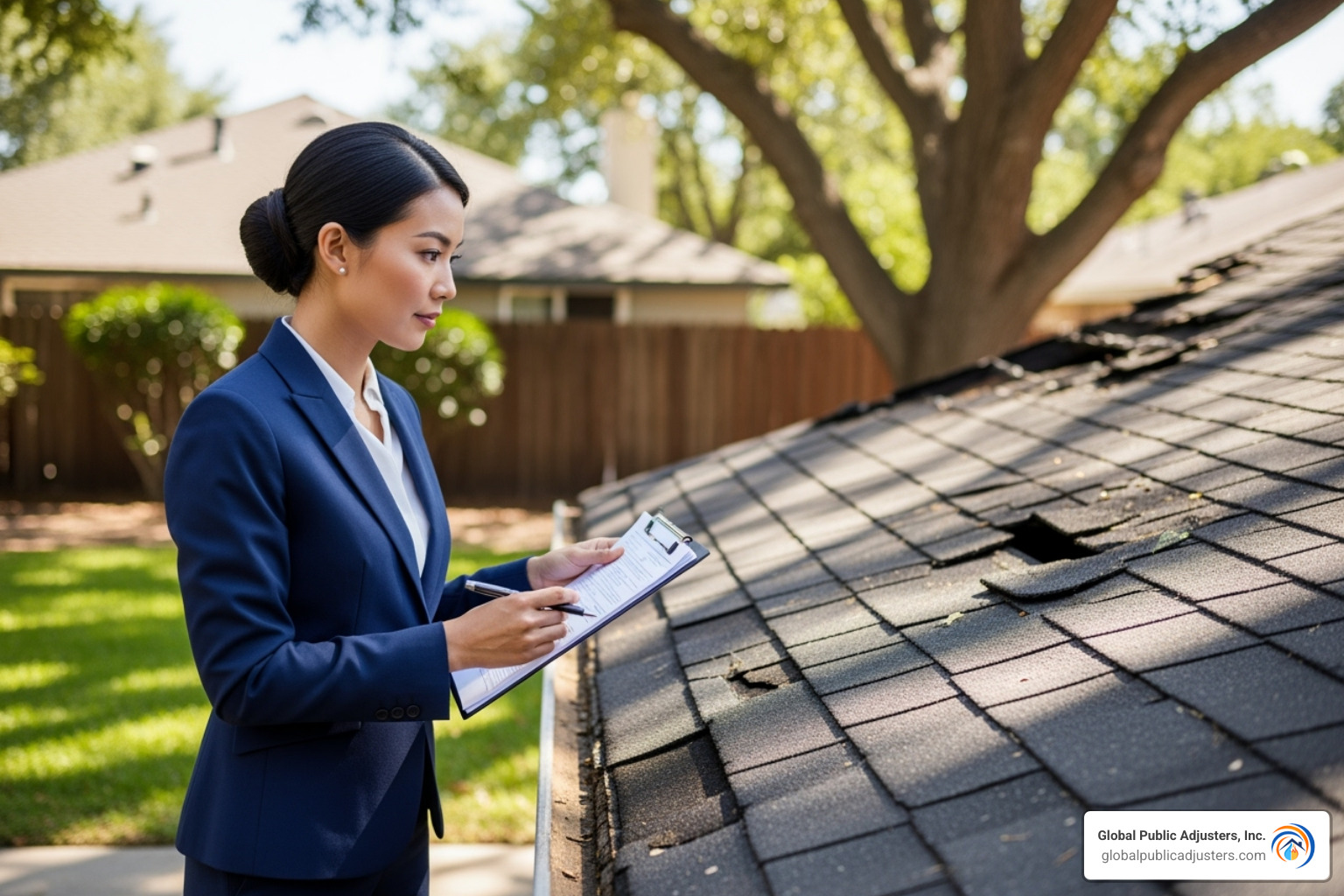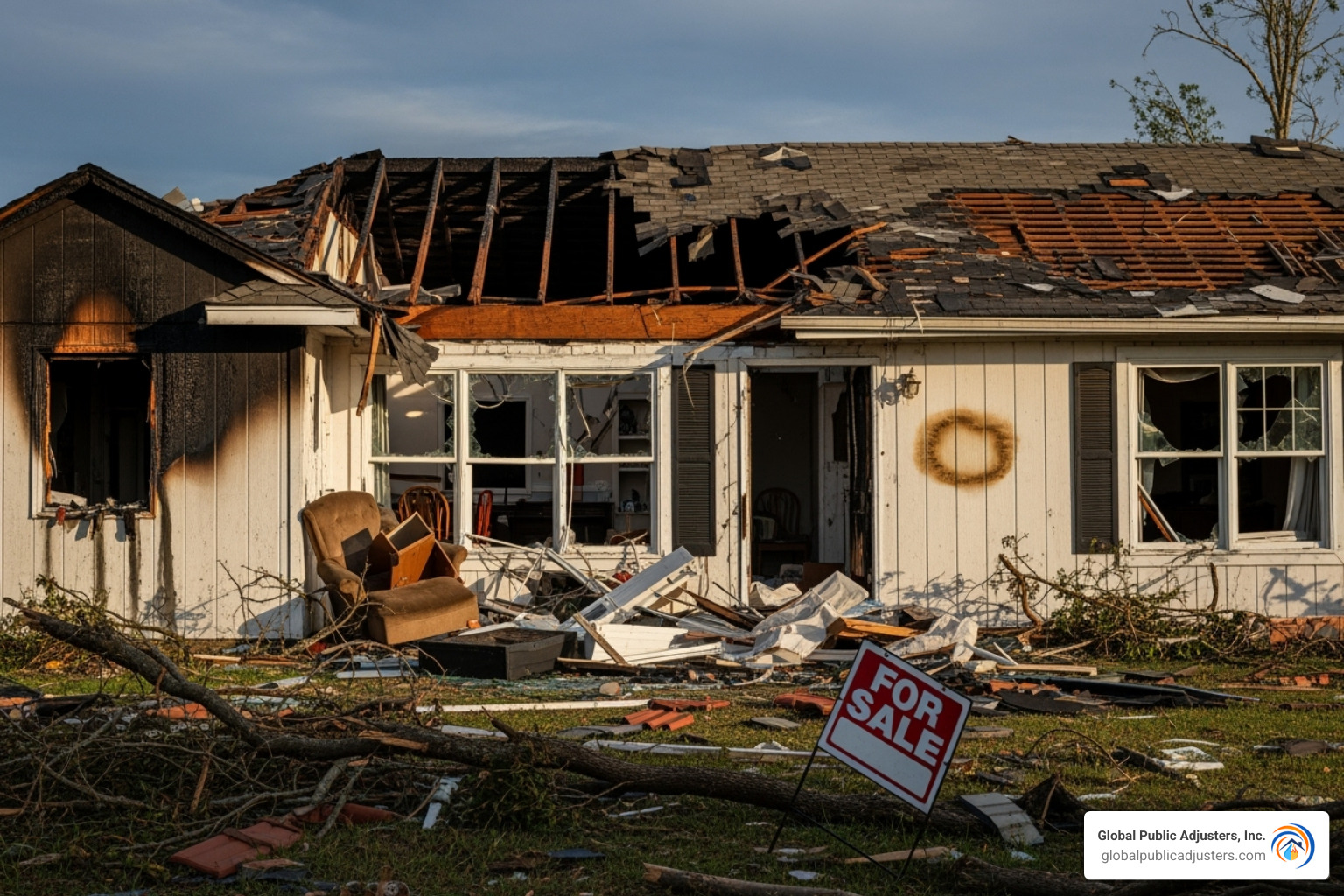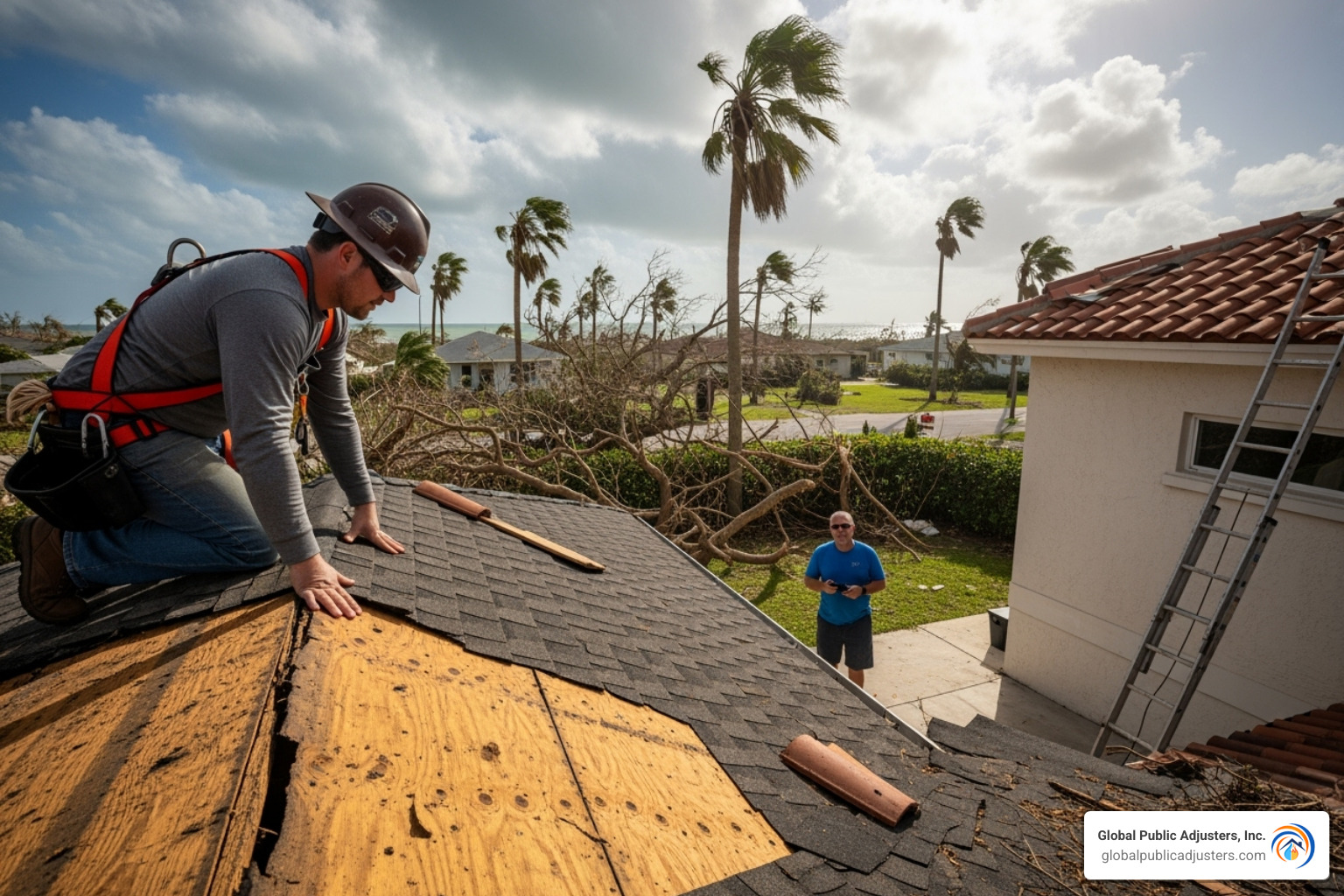Claim Adjusting: 3 Faces Uncovered
Understanding the Complex World of Claim Adjusting
Claim adjustingis the process where insurance professionals investigate, evaluate, and settle insurance claims to determine how much money should be paid to policyholders after a covered loss. This complex process involves determining coverage, assessing damages, and negotiating fair settlements between insurance companies and claimants.
Quick Facts About Claim Adjusting:
- What it is:The investigation and settlement of insurance claims
- Who does it:Staff adjusters, independent adjusters, and public adjusters
- Main steps:Report, investigate, evaluate, negotiate, settle
- Timeline:Can take weeks to months depending on complexity
- Key goal:Determine fair compensation for covered losses
When disaster strikes your home or business, insurance claims can feel overwhelming. Whether it’s hurricane damage, fire loss, or water damage, you’re suddenly thrust into a complex process that can determine whether you receive fair compensation for your losses.
The reality is that claim adjusting isn’t just about filling out forms and writing checks. It’s a detailed investigation process that requires expertise, negotiation skills, and a deep understanding of insurance policies. As one industry expert notes,“Claims adjusters are often asked to perform extraordinarily difficult work under grueling circumstances”– especially after major catastrophes.
Understanding how claim adjusting works is crucial for anyone dealing with property damage. The adjuster assigned to your case will make decisions that directly impact your financial recovery. But here’s what many people don’t realize:not all adjusters work for you.
Some adjusters represent the insurance company’s interests, while others can be hired to advocate specifically for you as the policyholder. This distinction can make a significant difference in your final settlement amount.

Claim adjustingfurther reading:
The Three Faces of Adjusting: Who Really Works for You?

The person handling your claim isn’t automatically on your side. Knowingwho pays the adjusterhelps you understand whose interests they protect.
Staff Adjuster (Company Adjuster)
- Works directly for one insurer and follows that company’s settlement guidelines.
- Typical pay:$45k–$80k salaryplus benefits.
- Goal: close claims efficiently and control costs for the insurer.
Independent Adjuster
- Freelance contractor hired by several insurance companies, especially after catastrophes.
- Paidper claim or per hourby the insurer that assigns the file.
- Goal: fast, accurate resolutions that keep carrier-clients happy.
Public Adjuster
- The only adjuster hired by policyholders.
- Paid acontingency fee (10-20 %)of the final settlement—so their success is tied to yours.
- Goal: document damage thoroughly andmaximizewhat the insurer pays.
| Adjuster Type | Represents | Paid By | Primary Objective |
|---|---|---|---|
| Staff | Insurance company | Salary | Settle within company guidelines |
| Independent | Insurance company | Per-claim/ hourly | Efficient claim handling |
| Public | Policyholder | % of settlement | Maximize policyholder recovery |
What The Public Doesn’t Know About Public Insurance Adjusters
The Claims Adjusting Process: From First Report to Final Settlement

Think of your adjuster as part detective, part accountant. Here’s the streamlined path your claim will follow:
1. First Notice of Loss
You call the insurer, a claim number is created, and coverage is verified. This opens the official file.
2. Adjuster Assignment & Contact
A staff or independent adjuster is picked based on claim size and workload. By law they usually must call you within 24–48 hours to explain next steps and set an inspection date.
3. Investigation & Documentation
- On-site inspection– photos, measurements, sometimes drones or 3-D scans.
- Interviews– you, witnesses, contractors.
- Document review– police/fire reports, weather data, receipts.
Everything is logged into claims software that eventually drives the numbers.
4. Damage Evaluation & Costing
Using pricing tools like Xactimate, the adjuster matches covered damage to local labor and material costs, then applies deductibles, limits, and any exclusions. ForReplacement Costpolicies depreciation is recoverable; forActual Cash Valueit isn’t.
More about property loss claims
5. Settlement Offer & Negotiation
You receive a written estimate. If something seems missing, provide more evidence or opposing contractor bids. Negotiation is normal. If an impasse arises, options include requesting a supervisor review, hiring a public adjuster, or filing a complaint with the Florida Department of Financial Services.
Once you accept, funds are issued—often with your mortgage company listed on the check for property claims.
Becoming a Claims Adjuster: A Career Path Deep Dive

A claims adjuster balances investigation, policy knowledge, and customer service—skills that transfer well across the insurance industry.
Core Skill Set
- Analytical thinking and attention to detail
- Empathy and clear communication
- Negotiation and time-management
- Comfort with tech tools (claims platforms, drones, estimating software)
Licenses & Training
Most states—including Florida—require:
- Pre-licensing course (20–40 hrs)
- State exam & background check
- Ongoing continuing education (e.g., FL: 24 hrs every two years)
In non-licensing states, carriers run in-house training instead.
Career & Earnings Snapshot
- Median U.S. wage:$76,790 (2024 BLS)
- Staff range:$45k–$80k+
- Independent adjusters:$50k–$100k+, especially during catastrophe deployments
- Growth:Projected –5 % through 2033, but CAT work and public adjusting niches remain strong.
Check your state’s licensing requirements
A Policyholder’s Guide: How to Steer Your Insurance Claim

Even though the insurer controls the process, you control theevidence. Here are the highest-impact steps.
Work Smarter With the Company Adjuster
- Attend the inspection.Point out every damaged item.
- Hand over organized proof.Photos, videos, receipts, contractor bids.
- Ask for clarification in writing.Keeps everyone accountable.
When a Public Adjuster Makes Sense
- Losses over ~$25,000
- Multiple damage types (wind, water, business interruption)
- Denials or low offers
- Limited time or expertise
Because public adjusters in Florida work on contingency (capped during declared emergencies), even a modest settlement increase can outweigh their fee.
Is It Time For Me To Hire A Public Adjuster?
Key Questions for Any Adjuster
- Are youlicensed in Florida? License #?
- How many claims like mine have you handled?
- What’s your expected timeline and communication method?
- (For public adjusters) What’s your fee, and does it include re-inspections or appraisal?
Four Key Questions To Ask Public Adjusters For Miami Property Damage
Frequently Asked Questions about Claim Adjusting
How much do public adjusters charge?
Public adjusters earn10–20 % of the final settlement(Florida caps fees to 10 % within the first year after a declared emergency). No up-front money is required—their pay comes out of the additional funds they secure for you.
Is being a claims adjuster stressful?
Yes. Adjusters face tight statutory deadlines, travel after disasters, and high-stakes decisions. For many, helping families rebuild outweighs the pressure, but burnout is common without good work-life boundaries.
What if my claim is denied or underpaid?
- Request the denial or estimate in writing.
- Review your policyfor applicable coverages.
- Gather new evidence—extra photos, receipts, expert reports.
- File an appealor hire a public adjuster to reopen negotiations.
- If bad-faith behavior is suspected, you can contact theFlorida Department of Financial Servicesor consult an insurance attorney.
What To Do When Your Home Insurance Claim Is Denied
Conclusion: Taking Control of Your Claim Outcome
When disaster strikes your home or business, you’re suddenly thrust into the complex world ofclaim adjusting– a process that can feel overwhelming and confusing. But here’s the truth: you don’t have to steer this journey alone or accept whatever settlement the insurance company offers first.
Throughout this guide, we’ve pulled back the curtain on howclaim adjustingreally works. We’ve shown you thatnot all adjusters work for you– company and independent adjusters represent the insurance company’s interests, while public adjusters are the only professionals who work exclusively for policyholders like you.
The claims process is far more complexthan most people realize. From that first phone call reporting your loss to the final settlement check, multiple steps require expertise, attention to detail, and knowledge of insurance policies that most homeowners simply don’t have. That’s not your fault – it’s just not something you deal with every day.
But here’s what you need to remember:you have rights and options. You don’t have to accept the first settlement offer that comes your way. You can ask questions, provide additional documentation, and seek professional advocacy when the situation calls for it.
Thorough documentation is absolutely crucialto your claim outcome. The difference between a fair settlement and leaving thousands of dollars on the table often comes down to how well your losses are documented and presented to the insurance company.
When you’re dealing with significant property damage – whether from Florida’s notorious hurricanes, water damage, fire, or other covered losses –professional help can make all the difference. At Global Public Adjusters, Inc., we’ve spent over 50 years helping Florida homeowners and business owners steer these choppy waters. We’ve seen how the right advocacy can mean the difference between a fair settlement and settling for far less than you deserve.
Think about it this way: insurance companies have entire teams of professionals working to protect their interests. Shouldn’t you have someone working exclusively for yours?
Claim adjustingdoesn’t have to be intimidating when you understand the process and have the right support. Whether you choose to handle your claim yourself or hire a public adjuster, the key is being informed and proactive about protecting your interests.
For complex or significant property damage claims, having an expert advocate like Global Public Adjusters, Inc. on your side can ensure you receive the maximum settlement you are entitled to under your policy. We know the ins and outs of insurance policies, we speak the language of adjusters, and we’re not afraid to fight for what you deserve.
Get expert help with your insurance claim today
When disaster strikes, you want to focus on getting your life back to normal – not battling with insurance companies over settlement amounts. With the right knowledge and professional support, you can ensure that when it comes to your insurance claim, you’re prepared to settle the score fairly and completely.



